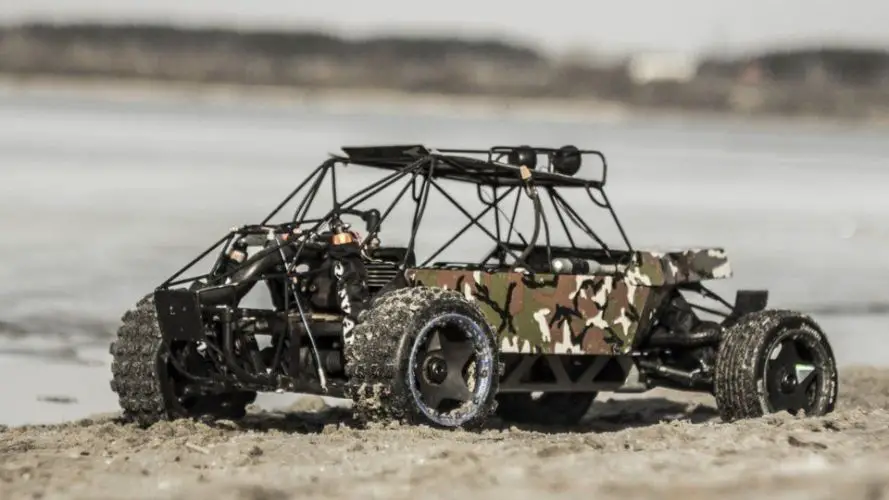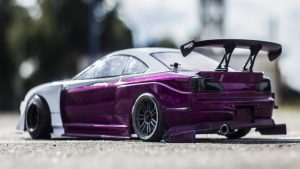Building RC cars is a great way for kids to develop hand-eye coordination and critical thinking skills. There are many prefabricated kits available for those who want to work on specific builds, but the possibilities don’t stop there. Those who want extra cool custom DIYs can pick out individual components separately to build their dream model – or, if they’re feeling extra industrious, even old household materials like cardboard and plastic can be turned into the body of a DIY RC car.
Check out our 5 tips on how to build a DIY RC car at home to get you on the road to an awesome project.
1. Have basic tools available
No matter what kind of RC model you’re building, there are a few basic tools that will come in handy. It’s not safe or possible to assemble these models entirely with your hands, so make sure you’re prepared – fortunately, it’s likely you already have much of what’s needed. Needle-nose pliers are essential for getting small parts into tight areas. Small, long screwdrivers to make sure little screws are tightly fastened. Some screws have sockets that require hex keys, so have those on hand as well. Finally, small wrenches are needed to tighten nuts.
2. Understand common RC parts
If you’re new to the RC world, building models can seem intimidating – there’s a lot of parts. It can help to imagine the parts in groups of 3. The first group includes the body and accessories. These may be components that are purchased, or they may be made from household materials. Ultimately, they determine much of the car’s final appearance. The second group includes the motor, servo(the unit that converts electricity into propulsion), charger and battery; they’re the parts that determine performance. Finally, there’s the remote control and receiver, which determine range. Although the list of parts is a bit long, they’re simple to understand once you grasp their function.
3. Choose a durable body
As we mentioned, when it comes to the body of the RC car, builders have two basic options. They can choose from one of the many prefab models available, or they can construct their own body with metal, plastic, cardboard or other materials. While many things CAN be turned into an RC car, it goes without saying that some will be more durable than others. If your kids want to build a car with household materials, one made of sturdy plastic will hold up a lot longer than a simple cardboard car or something more delicate. There are many tutorials available online that can guide you toward the best picks.
3. Listen to the pros
Whether you’re a first timer or have a bit of experience, building RCs from scratch can be a little intimidating. Fortunately, builders have the advantage of accessing a massive community of remote control vehicle enthusiasts online who have created videos, articles, forums and tutorials that are helpful to people at all levels of skill. When in doubt, there’s no harm in consulting the trove of knowledge that’s available on the subject. If you have particularly niche questions, check out forms and chat rooms – there, you’re likely to find RC fans who will be more than happy to look over your project and give you a bit of advice.
5. Customize your look
Cool RCs are all about form and function, and customizing the look of your car can be easy and fun. When choosing household materials, metal or plastic, you have the option of choosing your own paint colors, design and finish to make an RC car that’s uniquely yours. When the paint job is done, you can add any of a variety of awesome decals – you can buy stickers online from RC shops or choose others that you enjoy. There are fun ways to add custom touches through parts, too. Glow plugs add illumination to head lamps. Cool tires can go a long way in adding both aesthetics and performance. On nitro models, shiny exhaust pipes make RCs look like sweet street racers.
6. They’ll diffuse some tension
Whether it’s loud, raucous and extremely physical or quiet, soothing and gentle, sensory play can help children to soothe emotional upsets and tension they’re not sure how to verbalize. From time to time, we all struggle with feeling angry or overwhelmed and aren’t able to handle any more negative sensory input. The kind of stimulus that works varies by kid – just like some adults like aromatherapy and others de-stress by kickboxing, some kids achieve calm through hectic sensory stimulation while others require something more subtle.
Wrapping up
Whether it’s a sports car, truck, buggy or your own unique creation, you don’t have to be a seasoned pro to build a DIY RC car at home. Do a little research into your favorite styles and watch some videos to gear up, roll up your sleeves and get to work. Experience is the best teacher and you’ll have fun perfecting your vehicle. By the time you’re done, you’ll be full of ideas for your next project!








